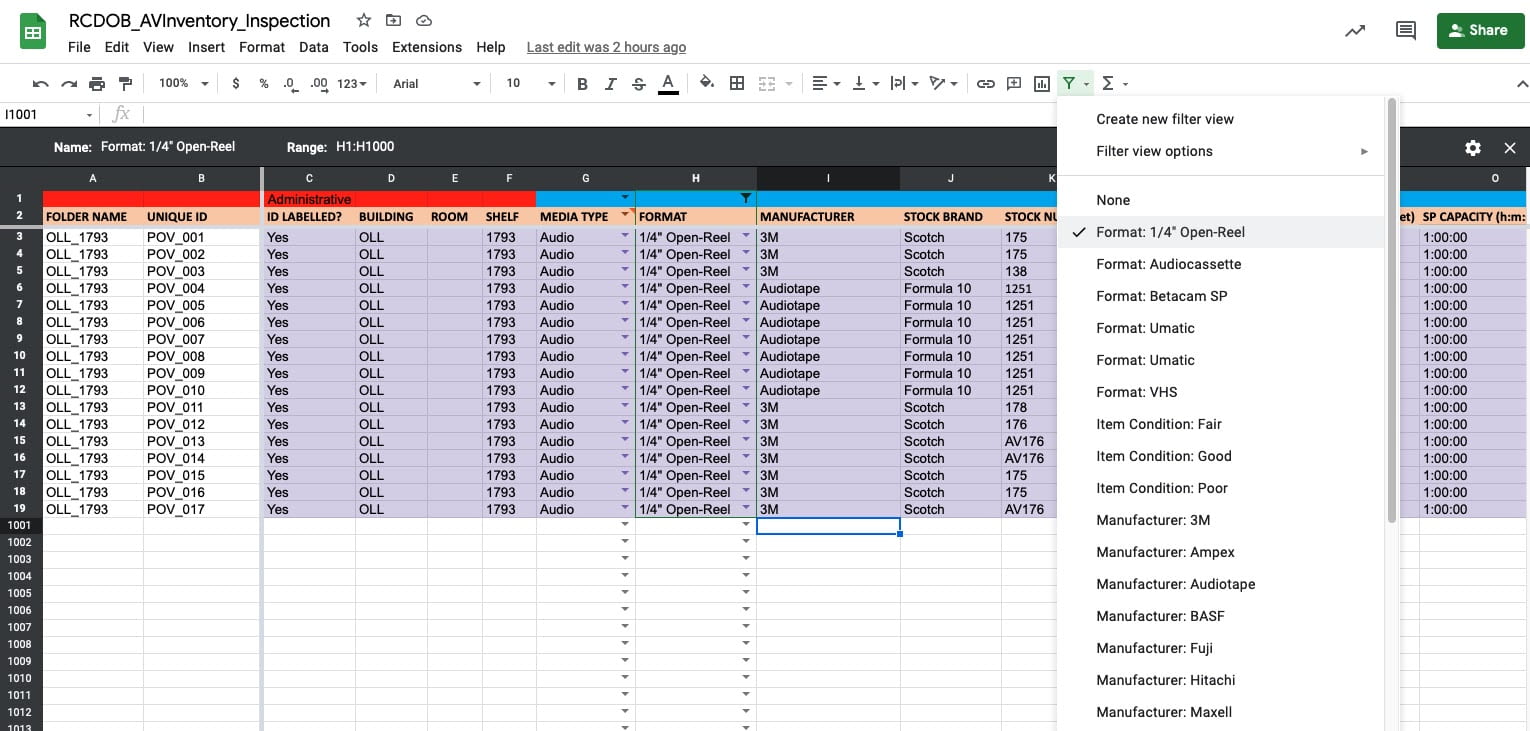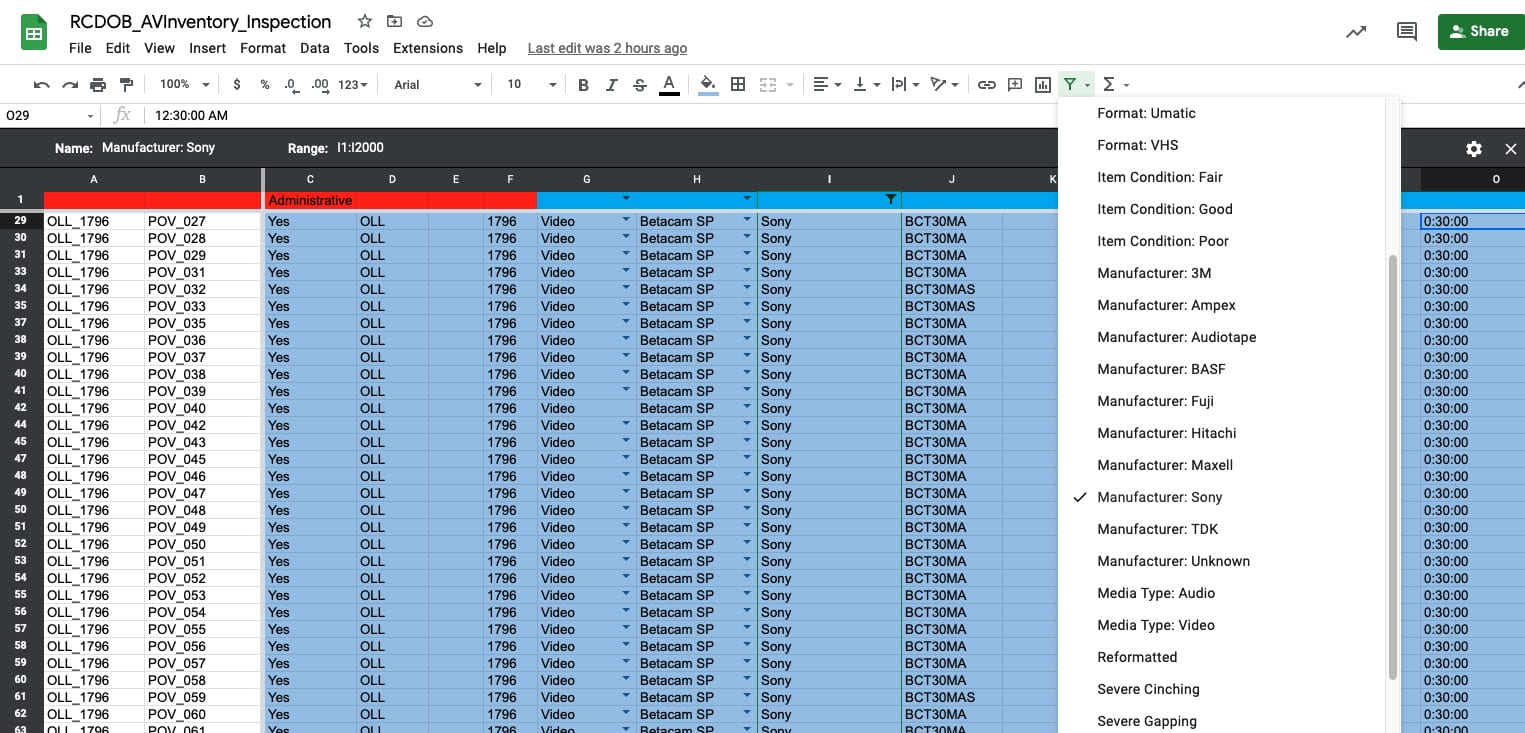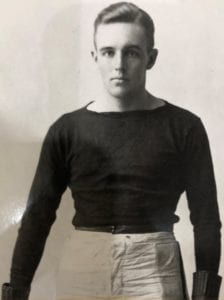During the Fall 2021 semester, the RML project supported two interns from the NYU Moving Image Archiving and Preservation program. Each intern was hosted by an organization located on Long Island, which includes Suffolk, Nassau, Queens, and Kings counties. The following post is from Alyosha Nowlin, who interned at the R.C. Diocese of Brooklyn.
Inaugurated in April 2019, with the appointment of Project Manager, Marie Lascu, the Regional Media Legacies project (RML) is a program designed to support the training of Moving Image Archiving and Preservation (MIAP) graduate students in the care and management of audiovisual and digital media collections held across Brooklyn, Queens, and Long Island, New York. With generous funding from the Robert David Lion Gardiner Foundation, students and graduates from the MIAP program at New York University’s Tisch School of the Arts have been assisting a variety of regional organizations in processing and better understanding their audiovisual collections while providing guidance on future care and preservation of these collections. One such institution is the Roman Catholic Diocese of Brooklyn Archives, which has previously hosted two MIAP interns under the RML project.
Work at the Diocesan Archives was conducted this term by a third MIAP student, Alyosha Nowlin, who has been continuing organizational efforts begun by previous interns Lindsay Miller and Ben Rubin, refining these processes to assist the archives with future inventory, inspection, and metadata collection. Where Ben Rubin helped advance the inventory, and digitized a number of video tapes using the RML video kit, another MIAP intern, Lindsay Miller, designed an identification system, and assigned unique identifiers to 441 items. Lindsay’s work was performed offsite due to the pandemic, and items were not physically labeled because of remote work restrictions. Because my internship allowed for in-person access, I was able to physically apply labels to these, and over 100 additional items.
Audiovisual collections at the Diocese are diverse and are kept in more than one location. Most items are stored either at the Archives in Brooklyn or offsite at the Immaculate Conception Center on Long Island. Work was done at the Prospect Park location, with many items being brought in for inspection at the Archives office. Materials come from a variety of church-related organizations, including Pastoral Communications, the Public Information Office, and the Superintendent of Schools curriculum media. Other notable collections include original MiniDV video tapes of the Senior Priest Oral History Project and audio tapes of the Point of View: Catholic series, with some early episodes originally recorded on ¼” audio tape for broadcast on local radio. Media formats inspected as part of this internship include audiocassette, ¼” audio tape, Digital Audio Tape, 33 ⅓ RPM vinyl discs, ¾” Umatic cassettes, VHS, and Betacam SP.
To date, over 600 items have been inventoried, labeled, inspected with care, and included in a spreadsheet detailing their condition. Items were organized by collection provenance, and arranged by format. Using the Filter function in Google Sheets, displayed inventory can be modified to include only certain information. For example, users may now look in the mixed-media “POV” collection, and search for material by media type or format…

By degree/type of damage…

By manufacturer…

…and by recommended preservation action, among other criteria, while the search function allows for the rapid connection of a title to its location and unique identifier. New spreadsheet columns were added to previously created inventories, enabling the detailed gathering of metadata based on format. Following up on the valiant efforts of my MIAP predecessor, Lindsay Miller, I am confident that this expanded template will suffice for the future collection of audiovisual metadata at the Diocese.
From the perspective of a media preservation specialist, the most at-risk materials are the audio tapes. First are the ¼” audio tapes, stored on reels, some of which have been subjected to serious damage in playback years before this project. These tapes cannot be inspected accurately without playback equipment; their specific content, besides program and date, are often obscure or unknown; and they show signs of binder degradation upon preliminary inspection. Many audiocassettes are likewise succumbing to the effects of flaking emulsion and their lifespan is significantly limited in comparison with either videocassettes or optical media. Some audio tapes may already be impossible to play, and therefore capture, suggesting that overall, these items are in urgent need of reformatting and digital preservation. Certainly, the audio tape materials encountered in this internship work are in more dire need of preservation than any other format.
While the ¼” audio tapes are in most immediate need of action based on their state of degradation, it was decided, in consultation with the archivist, that the Senior Priest Oral History collection, comprised of MiniDV video cassettes and optical discs, should be selected for its cultural significance and overall unity as a project. The collection totals 139 items, with 54 MiniDV, 77 DVDs, and 8 CDs. Original footage was captured on MiniDV, between 2007 and 2009, and edited content was transferred to optical media formats by a private videographer. Content on optical media is unencrypted, can be easily transferred to digital storage, and for these reasons, was not selected for preservation by an outside vendor. As a capstone to this internship, it has been decided that all 54 unedited MiniDV tapes shall be preserved by a qualified outside vendor. Files will be preserved on redundant storage, and a request for proposals has been prepared to locate an ideal vendor for this project.
In conclusion, this internship has been a wonderful opportunity to apply knowledge gained in my MIAP studies and throughout my prior career as an apprentice archivist. I am grateful for my previous MIAP internship of Summer 2021 at the Bay Area Video Coalition, where I learned many terms that helped me describe the Diocese’s archival media and their status more accurately. Also, my skills with inventory software and spreadsheet optimization have improved substantially. It is hoped that the modified inventory template provided will serve the Diocesan Archives as they proceed with their AV collections inventory, and that future interns will be better equipped to conduct assessments of this large, mixed-media collection.

























